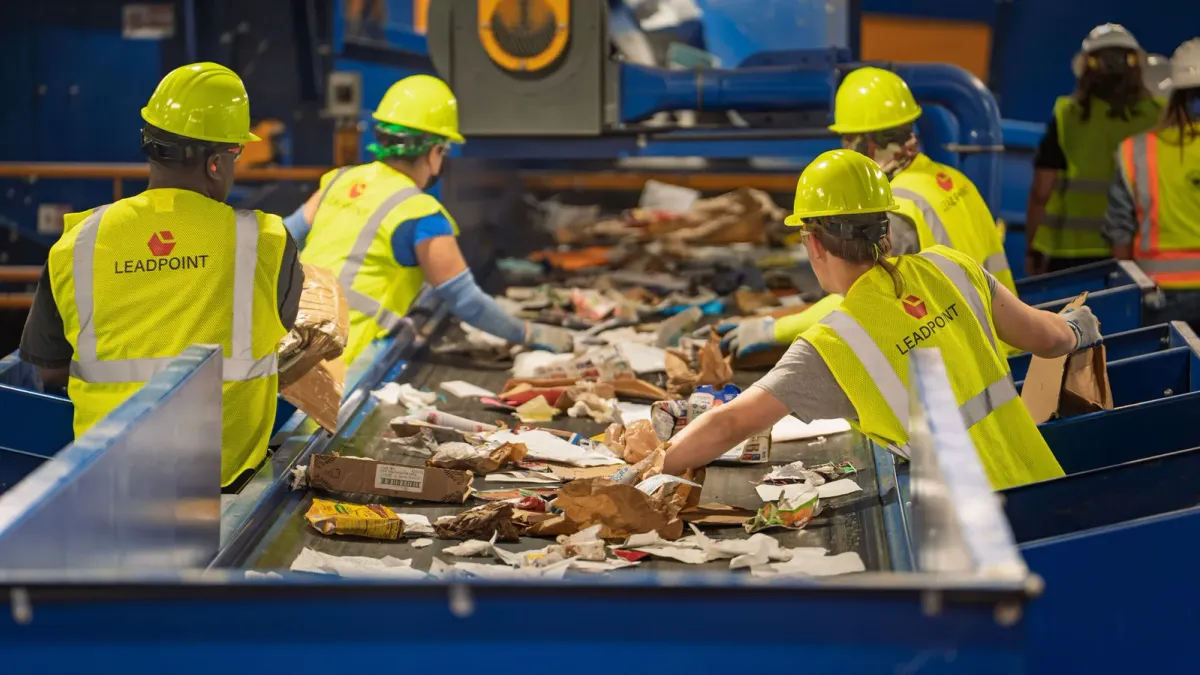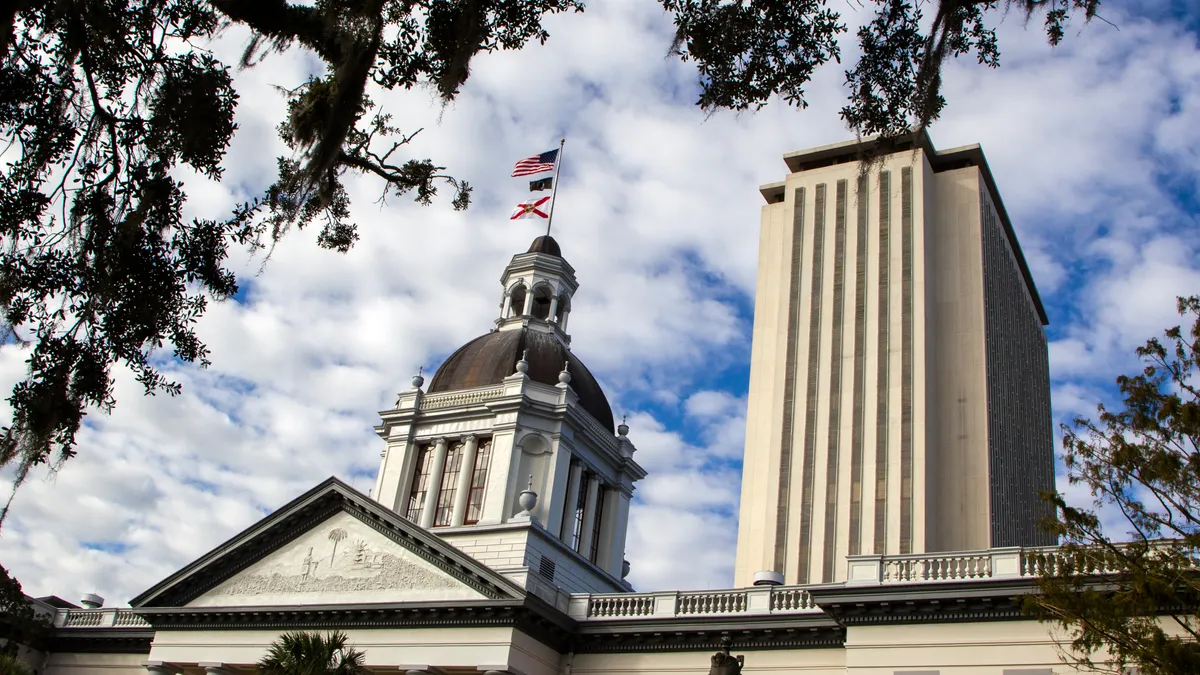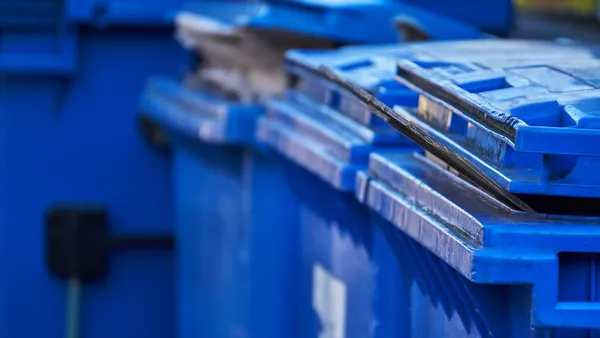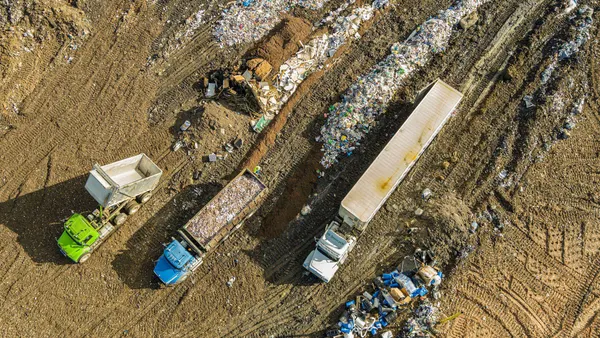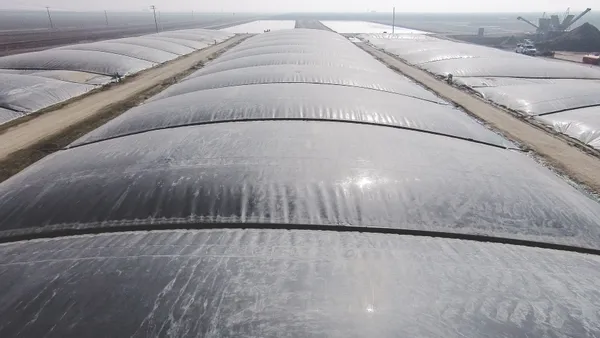MRFs in the Northeast noted an increase in average commodity prices for the first quarter of 2025, according to a report from the Northeast Recycling Council.
In Q1, average blended commodity value without residuals was $102.34, an increase of more than 9% from the previous quarter. When calculating the value with residuals, prices were closer to $89.62, an increase of 8.6%, the quarterly MRF Commodity Values Survey Report says.
Single-stream MRFs saw values increase by 12% without residuals and 11% with residuals, while dual-stream or source-separated MRFs saw increases of about 10% without residuals and 9% with residuals. Major publicly-traded waste companies echoed some similar commodity trends during their Q1 earnings calls.
In a new format from previous reports, NERC’s latest version also provided average prices for specific commodities. Surveyed MRFs reported an average OCC price of $99.68 and $54.92 for mixed paper. For plastics, MRFs reported PET at $363.31 per ton and natural HDPE at $1,910.20 per ton, among other plastic commodity prices.
The Q1 report also noted some general trends, including an 8% increase in residue since the same period in 2022. It also highlighted that MRFs recorded lower volumes of outbound tons in 2024 compared to 2022, except for PP and bulky rigids, which increased by 40% and 29%, respectively.
NERC says its reports are not meant to be used as a price guide for MRF contracts. NERC’s quarterly report includes data from 19 MRFs across 12 Northeastern states. It surveys a variety of MRFs in a variety of markets, including those in five states with beverage container deposit laws, which affect material flows into MRFs. It presents a regional look at price trends and is a part of NERC’s ongoing work to promote and boost recycled commodity supply and demand in the Northeast.
U.S. MRFs announce reopenings and expansions
Numerous factors can influence commodity values, but increasing operational efficiencies and MRF upgrades are often contributing factors that can help operators fetch higher prices. Here’s a look at several companies throughout the U.S. that have recently announced significant MRF upgrades:
Eureka Recycling, Minneapolis, Minnesota:
- The nonprofit recycler invested $12 million to upgrade the facility, which it unveiled as part of its 20th anniversary celebration in April.
- Eureka added four optical sorters, including three along its paper line. “That was a huge thing for us, so now our paper quality is just so much better,” said Miriam Holsinger, Eureka’s co-president, in an April interview.
- An upgraded cardboard separation system aims to increase small-format cardboard recovery, and a bigger conveyor belt aims to reduce downtime caused by cardboard jams. The improvements have cut maintenance time by about 60%, Holsinger said.
- Improved paper quality will be key for Eureka as it looks for new markets to sell the material, she said. “If you want to stay ahead of the curve, especially to prepare for a possible economic downturn, having solid quality is always helpful in making sure we can continue to move material.”
Casella Waste Systems, Willimantic, Connecticut:
- Casella’s newly renovated MRF features $20 million in upgrades, including sorting equipment from Machinex, along with new power infrastructure and lighting. Casella also replaced the tipping floor and installed an improved fire suppression system.
- The upgrade, meant to improve material quality and operational efficiency, is expected to nearly double its processing capacity. Prior to the improvements, the Willimantic facility processed about 60,000 tons a year.
- During the company’s Q1 earnings call, Casella executives said the facility is on track to deliver $4 million of earnings before interest, taxes, depreciation and amortization in 2025. The company says it has spent more than $50 million on other related recycling improvements in the last three years.
27th Avenue MRF, Phoenix, Arizona:
- The City of Phoenix’s Public Works Department recently reopened its MRF after four years of construction. The improvements are meant to help Phoenix reduce contamination, which makes baled materials more valuable, officials said in a news release.
- The MRF, operated by Balcones Recycling, has all-new equipment including a front-end trommel, two ballistic separators, a sorting robot and 11 optical sorters. It processes about 30 tons an hour.
- The improvements are also meant to help Phoenix more efficiently manage recyclable material as its population grows. The city collects recyclables from about 420,000 households.
Anticipated future expansions and upgrades:
- Republic Services, Bridgeton, Missouri: A new MRF, scheduled for groundbreaking in Q1 2026, will serve the greater St. Louis area. Plans for the facility include at least 10 optical sorters for identifying and separating paper and plastic, as well as AI-enabled systems to help reduce contamination and adjust operations to maximize volumes. Republic expects to process about 45 tons an hour in the 105,000-square-foot facility. The project will employ about 60 full-time employees once it is completed in 2027, the company says.
- Portsmouth, Virginia: The city announced a new $200 million recycling facility, which will be built in a partnership between the Southeast Public Service Authority and AMP. The facility will use AMP's AI-assisted technology to sort single-stream recycling and will extend the life of the region’s landfill, said Mayor Shannon Glover, who announced the partnership during an annual State of the City address on May 2. He did not announce a timeline for the project. Portsmouth’s transfer station already uses AMP’s technology.
This story first appeared in the Waste Dive: Recycling newsletter. Sign up for the weekly emails here.



